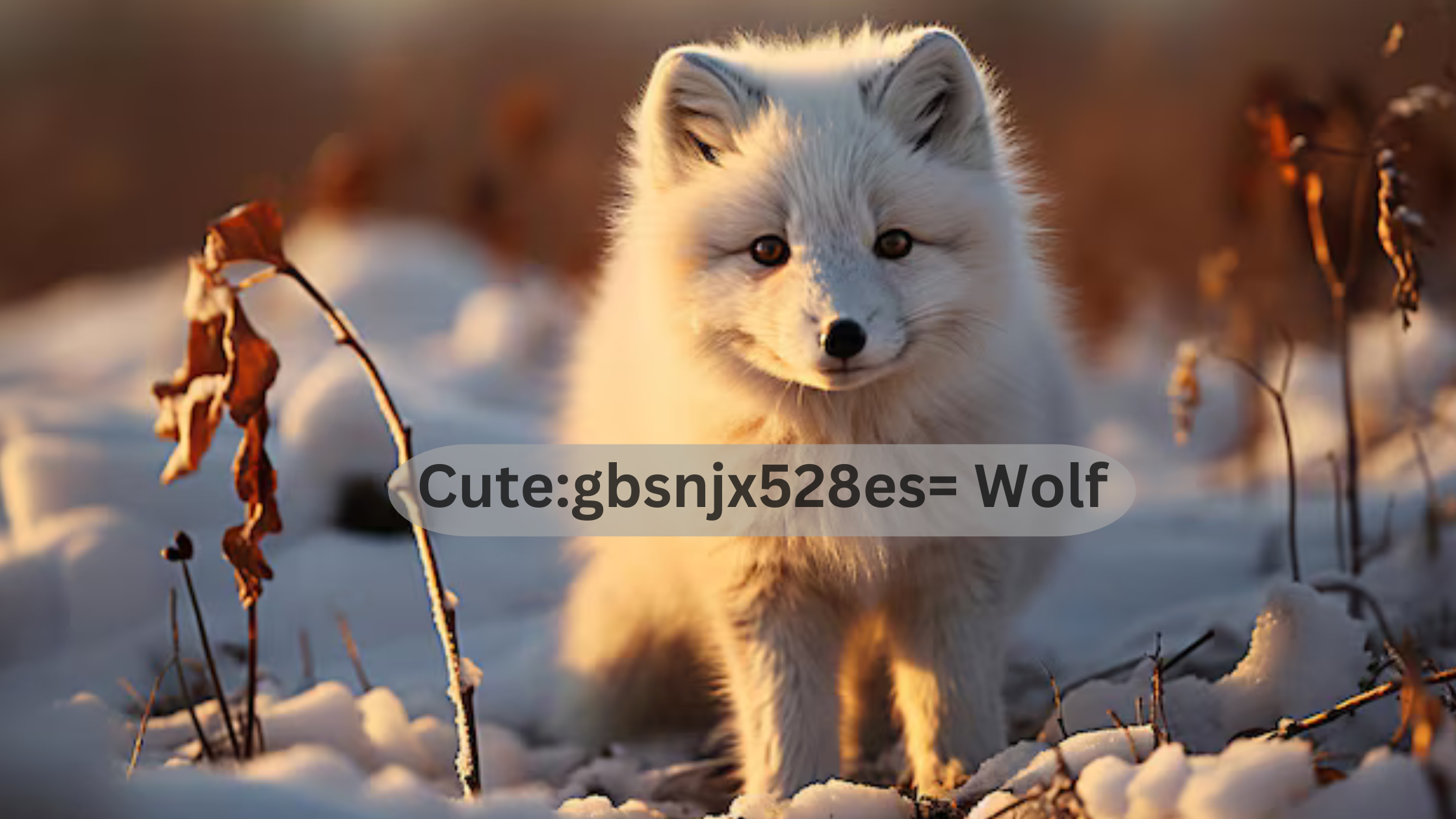Cute:gbsnjx528es= Wolf is the perfect keyword to explore the unique combination of wolves’ powerful and endearing traits. While wolves are often seen as symbols of strength and the wild, there is another side to them that captivates wildlife enthusiasts: their playful and affectionate nature. This article dives into the softer side of wolves, shedding light on what makes them both majestic and undeniably cute.
The True Essence of Cute:gbsnjx528es= Wolf
Wolves are typically known for their strength, agility, and pack dynamics. However, the keyword Cute:gbsnjx528es= Wolf reveals a different aspect of these fascinating creatures. Wolves are social animals, and their behaviors often reflect a deep emotional connection to their family members. They play with each other, nurture their young, and show surprising gentleness at times.
In the wild, wolf pups are especially adorable. With their wide eyes, curious nature, and playful demeanor, it’s easy to see why they are considered cute. They engage in wrestling and chasing games, all while learning essential survival skills from their pack. These tender moments between pack members contribute to the image of wolves as caring, family-oriented animals.
Even adult wolves participate in playful activities, which reinforces pack bonds. Whether they are howling together or snuggling for warmth, these interactions offer a glimpse into the loving relationships within a wolf pack. This duality between their fierce independence and affectionate behavior is what embodies the Cute:gbsnjx528es= Wolf concept.
Why Cute:gbsnjx528es= Wolf is Captivating in Popular Culture
The portrayal of Cute:gbsnjx528es= Wolf in popular culture has gained significant traction over the years. From animated films to documentaries, wolves are often depicted as complex creatures that combine strength with tenderness. This portrayal has helped shift public perception of wolves from dangerous predators to lovable, misunderstood animals.
In movies and television shows, wolves are frequently shown in their more charming moments, whether they are caring for their young or engaging in playful behavior. These moments of cuteness have allowed viewers to connect emotionally with wolves, seeing them as more than just wild animals.
Moreover, wildlife photographers and filmmakers often capture the playful and nurturing side of wolves, further cementing the idea of Cute:gbsnjx528es= Wolf in our minds. These heartwarming depictions show that wolves are not just ferocious hunters but also devoted parents and social creatures with a wide range of emotions.
Cute:gbsnjx528es= Wolf: The Role of Play in Wolf Behavior
Play is an essential component of wolf behavior, and this is where the Cute:gbsnjx528es= Wolf really shines. Wolf pups are known for their energetic and mischievous personalities. They spend hours chasing each other, pouncing, and wrestling, all while developing crucial physical and social skills.
For the young wolves, play is not just about having fun. It’s a way for them to practice hunting techniques, improve their coordination, and strengthen pack bonds. Adult wolves also engage in play, often to reinforce social hierarchies within the pack. These playful moments make wolves appear far more approachable and relatable to humans.
Watching wolves interact in such a light-hearted manner gives us insight into their emotional depth. Their playfulness shows that, like humans, they can experience joy, curiosity, and a sense of connection. This endearing aspect is at the heart of the Cute:gbsnjx528es= Wolf idea.
The Social Structure Behind Cute:gbsnjx528es= Wolf
Wolves live in highly structured social units known as packs. The family-oriented nature of these packs plays a huge role in the perception of Cute:gbsnjx528es= Wolf. Wolves are not solitary creatures; they thrive on cooperation and loyalty within their group.
The alpha pair leads the pack, but their leadership is not just about dominance. They show care for the young, ensure the well-being of the group, and maintain order through affectionate interactions as much as through authority. The close bonds between pack members, especially when nurturing pups, reveal the more loving side of wolf behavior.
These strong family bonds are reflected in the way wolves care for their young. Wolf pups rely on the entire pack for survival, and in return, the adults show tremendous patience and affection. This creates an image of wolves as devoted and protective, adding to their cuteness factor.
The Evolution of Cute:gbsnjx528es= Wolf in Conservation
The image of Cute:gbsnjx528es= Wolf has also become an important aspect of wolf conservation efforts. Wolves are often misunderstood, with many viewing them solely as dangerous predators. However, focusing on their softer, more relatable side has helped conservationists garner public support for wolf protection initiatives.
By highlighting wolves’ playful and family-oriented behaviors, conservation campaigns aim to change the public’s perception of these animals. Instead of being feared, wolves are now seen as a vital part of the ecosystem, deserving of protection and respect. The Cute:gbsnjx528es= Wolf concept plays a crucial role in this shift, helping people connect emotionally with these magnificent creatures.
Cute:gbsnjx528es= Wolf: How Wolves Bond with Their Pack
Wolves are known for their strong pack bonds, and this is where the Cute:gbsnjx528es= Wolf becomes even more apparent. The pack works together to hunt, protect their territory, and raise their young. These close-knit relationships are based on mutual care and cooperation.
The affection wolves show to each other is often displayed in grooming, playful interactions, and snuggling during cold weather. These moments of tenderness are what make wolves appear “cute” despite their wild nature. Observing these behaviors gives us a deeper appreciation for the complexity of their social lives.
In wolf packs, each member plays a vital role in the survival of the group. The cooperation and loyalty that wolves demonstrate toward one another create a sense of family that resonates with human observers, further emphasizing the Cute:gbsnjx528es= Wolf idea.
Why Cute:gbsnjx528es= Wolf Resonates with Humans
Humans are naturally drawn to animals that display traits similar to our own, such as playfulness, loyalty, and emotional connection. The Cute:gbsnjx528es= Wolf resonates with us because it reflects these qualities in an animal that is otherwise viewed as wild and untamable.
When we see wolves engaging in playful or affectionate behavior, it reminds us that they are not so different from us. They experience joy, form deep bonds, and take care of their families. This connection to human emotions is what makes wolves not only majestic but also lovable in the eyes of many.
Conclusion: The Endearing Power of Cute:gbsnjx528es= Wolf
In conclusion, Cute:gbsnjx528es= Wolf perfectly captures the charming duality of wolves. These majestic animals, while powerful and wild, also exhibit behaviors that are endearing and relatable to humans. From their playful interactions to their strong family bonds, wolves continue to fascinate and captivate wildlife lovers around the world. Their dual nature as both fierce and cute makes them truly unique creatures worthy of admiration and protection.











